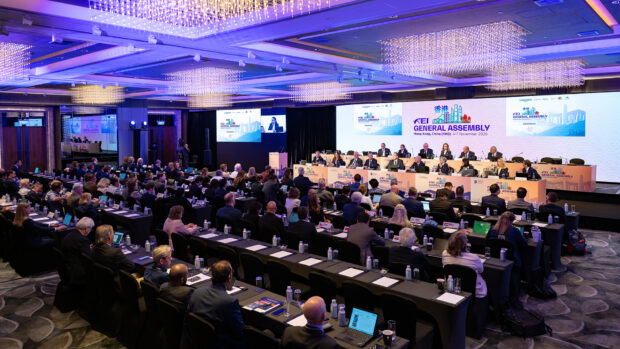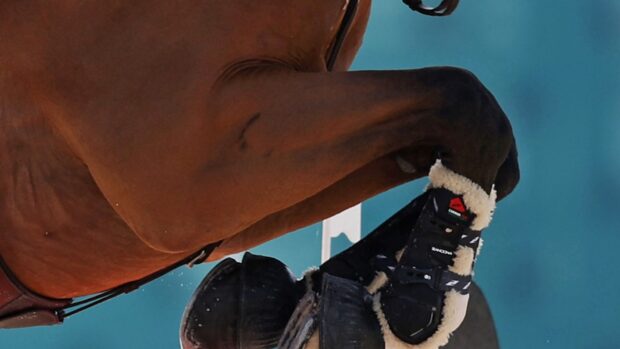New time limits on how long a cross-country course-designer can officiate at the same venue, plus changes to minimum eligibility requirements (MERs) for horses returning to competition following a break, are likely to be on the cards for eventing in 2023.
The changes feature in the final draft of FEI eventing rule proposals, which will be voted on at the federation’s general assembly next week (10-13 November).
The suggestion in the first draft, which came from the Dutch federation, was that course-designers should be allowed to design at FEI championships for a maximum of two consecutive years. The rationale was that it would lead to a “diversified” way of building courses at championships.
It follows discussions at the 2022 FEI sports forum on whether course-designers should serve a maximum of six years at any event (news, 12 May). And the first draft of this rule sparked widespread debate, with Britain, Germany, New Zealand, the United States, the International Eventing Officials Club and the European Equestrian Federation all weighing in.
Concerns over costs, the value of building relationships, potential loss of income for professional designers and worries that less experienced designers could be put in a position they are “not ready for” were aired.
The end result is that the final draft rule to be voted on goes beyond championships to set a time limit on a course-designer’s tenure at any four- or five-star event.
“A course-designer must not officiate at the same venue for more than six consecutive years at CCI4*-S and CCI4*-L including championships and for more than eight consecutive years at CCI5*-L,” states the final draft rule.
“The course-designer may officiate again after a break of three years. This requirement is included as of 1 January 2023 and will not apply retroactively.”
The FEI eventing committee gave further context.
“Further to the [Dutch federation’s] proposals as well as several informal discussions on the rotation of course-designers, the eventing committee suggests to introduce a limitation to course-designers to make more opportunities available to upcoming course-designers and encourage more exchange at the highest level to ensure the development of the sport,” said the committee.
“The first FEI proposal was to include a limitation of six years and a gap of three years at CCI4*-L and above only, including championships, as of 1 January 2023.
“Based on the comments received, the eventing committee reviewed the initial proposal and agreed to adjust it: as the CCI4*S/L competitions represents the majority of the events, it is more relevant to have a six-year period for CCI4*-S and for CCI4*-L and an eight-year period for CCI5*-L. The intention is to allow for more opportunities for course-designers to learn and step up at four-star.”
Other significant proposals include elimination for 20 or more showjumping faults, in competitions where the showjumping takes place before cross-country, which was supported by British Equestrian. In the event of a tie in the final results, the result will go in favour of the competitor with the best dressage mark on points – ahead of the competitor closest to the optimum across country time – to reduce the impact of rounding the dressage score to the nearest decimal.
Changes to MERs for horses returning to top-level competition and a rejig of rider categorisation have hit headlines in recent years, and now look likely to come into force in 2023.
FEI statistics show a “significant increase” in risk of a horse fall when a horse competes at four- and five-star level having been away from international competition for more than 18 months. This means horses returning to international competition after 13 months or more will be required to complete an event at the level below, before stepping back up.
British Equestrian asked whether this could be extended to 15 months, and whether national classes could count, while appreciating this could be tricky to monitor. The FEI eventing committee confirmed it cannot monitor results at national events, so the rule applies for international starts.
This will mean horses returning to CCI4*-S must first complete a CCI3*-S/L, those coming back to CCI4*-L must complete a CCI4*-S, and horses returning to compete at CCI5*-L must complete a CCI4*-S/L.
The proposal to tighten up athlete categorisations also sparked discussion. Athlete categorisation is a way of banding riders based on results and experience, which have a bearing on MERs.
The timeframe will be halved from a rolling eight-and-a-half years to four-and-a-half, and the number of competitions on which a categorisation is given will be reduced by around 30%.
British Equestrian called for a grace period, while the Eventing Riders Association (ERA) flagged concerns it could take single-horse riders “longer to get up the ladder”.
ERA voiced worries about a potential increase of “wear and tear” on horses and the impact it could have on amateur riders.
The German federation added: “We are afraid that fewer competitors are reaching the relevant higher category and therefore can’t compete any more as planned and trusted. Riders are planning the careers of their horses often over several years.”
You might also be interested in:

Subscribe to Horse & Hound magazine today – and enjoy unlimited website access all year round

More powers to pull riders up and debate over dressage: how horse sport may look in 2023

Piggy March: French travel woes, and the judging of eventing dressage

Andrew Nicholson: championships and five-stars can be complementary to each other
Horse & Hound magazine, out every Thursday, is packed with all the latest news and reports, as well as interviews, specials, nostalgia, vet and training advice. Find how you can enjoy the magazine delivered to your door every week, plus options to upgrade your subscription to access our online service that brings you breaking news and reports as well as other benefits.




